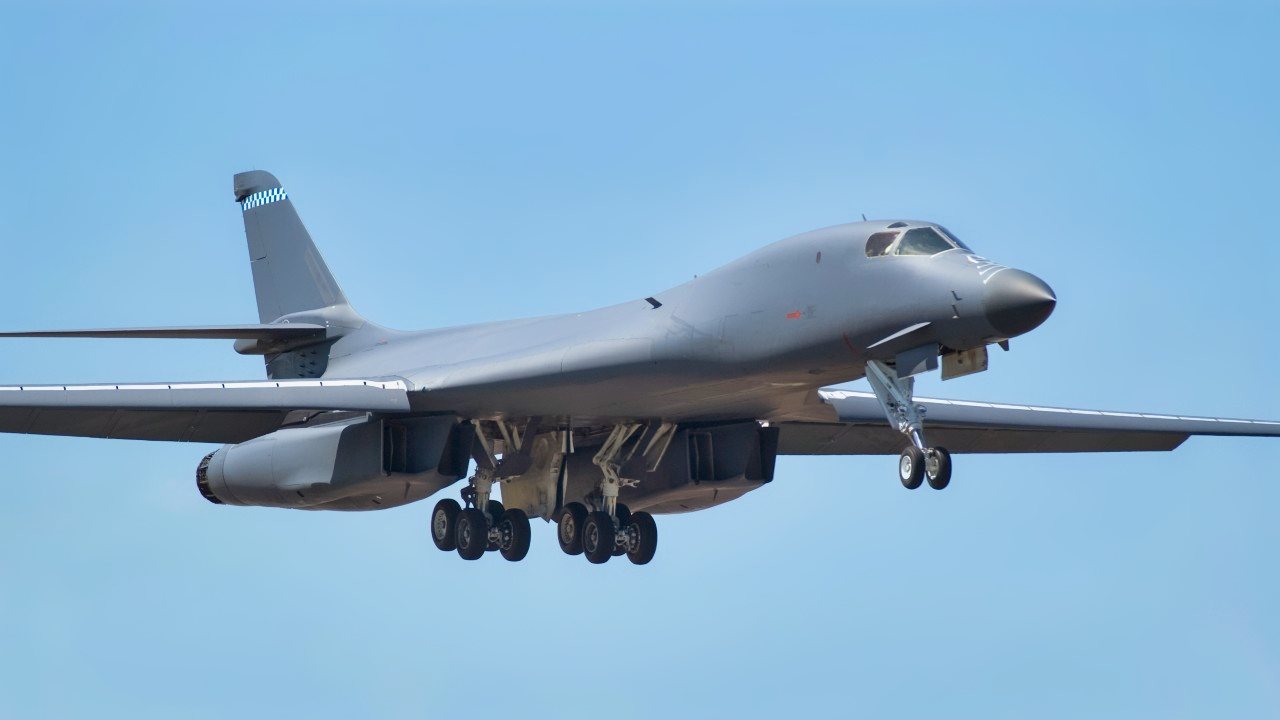The B-1B Lancer Can't Win a War Against Father Time

Summary and Key Points: The U.S. Air Force's B-1B Lancer has received significant technological upgrades, including a modernized Identification Friend or Foe system, Link 16 tactical data communications, and updated avionics to remain relevant. Launched at Dyess Air Force Base, these enhancements fall under the BEAST program, reducing crew workloads and enhancing combat focus.

-Initially a Cold War nuclear deterrent, the B-1B has evolved into a versatile conventional bomber, holding nearly 50 world records.
-Despite nearing retirement, the Lancer remains crucial until the B-21 Raider replaces it by 2026, cementing its legacy among aviation enthusiasts and military experts.
Father Time Is Calling for the B-1B Lancer Bomber
Late last year, a new B-1B Lancer featuring a range of technological upgrades was launched at the 7th Bomb Wing at Dyess Air Force Base.
This nearly fifty-year-old bomber received a modernized Identification Friend or Foe system, Link 16 tactical data communications capability, an updated mass data storage, a defensive avionics system, and new secure communication systems to remain relevant in the modern day.
As part of the Air Force’s BEAST program (B-1 Embracing Agile Scheduling Team), crew members can have decreased workloads, allowing them to focus on “combat employment of the weapon system itself,” according to the commander of the 7th Operations Group.
These upgrades are designed to keep the Lancer flying until its upcoming B-21 Raider replacement enters service.
A brief history of the B-1B Lancer
Following the Second World War, the U.S. Air Force recognized the need for a modern bomber capable of matching the payload of the Boeing B-52 Stratofortress while also matching the top speed of the Convair B-58 Hustler.
Around this time, the service selected North American Aviation’s XB-70 Valkyrie to fulfill this role. The airframe could fly at much higher speeds than the infamous Lockheed Martin U-2, making it a prime candidate to go up against the Soviet Union’s interceptor aircraft.
By the end of the decade, however, the threat landscape had changed. The USSR had developed anti-aircraft surface-to-air missiles (SAMs), which were successful in downing one of the CIA’s U-2 spy planes.
When President Richard Nixon took office, he reinstated the Advanced Manned Strategic Aircraft (AMSA) program which ultimately was renamed the B-1A. This became the first entry in the new bomber designation series, officially established in 1962.
Manufacturing giants across the country submitted proposals to be selected by 1970, and North American Rockwell (later renamed Rockwell International) was declared the winner the same year.
Similar to the North American XB-70 and General Dynamics F-111 Aardvark, Rockwell’s prototype featured large variable sweep-wings to provide increased lift during takeoff and landing in addition to using a crew escape capsule that could allow crew members to survive if the airframe had to be abandoned.
While the B-1 did sport some significant capabilities, its price tag was astronomical. The estimated cost for the bomber increased from $40 million to $100 million over seven years. Additionally, short-range cruise missiles were developed during this time, rendering the airframe vulnerable to the Soviets’ capabilities.
When Soviet pilot Viktor Belenko defected to Japan with a MiG-25 “Foxbat” airframe, the U.S. better understood that low-level penetration aircraft would be easily visible to the Soviet’s look-down/shoot-down radar. By 1977, President Jimmy Carter nixed the program altogether.

Introducing the B-1B
A change in presidential administrations in the early 1980s saved the B-1 program. Then-president Ronald Reagan reapproved a new B-1B variant in 1981, striving to force the USSR to allocate tons of resources into its air defense network to combat it. While the B-1B was slower than its original B-1A predecessor, the airframe was also less expensive.
According to the Air Force, “an additional structure to increase payload by 74,000 pounds, an improved radar and reduction of the radar cross-section by an order of magnitude. The changes led to a reduction in maximum speed to Mach 1.2.”
In terms of avionics, the Lancer is genuinely formidable. The bomber’s synthetic aperture radar can track, target, and engage moving targets in addition to self-targeting and terrain-following modes. Each bomber is also equipped with a Global Positioning System-aided Inertial Navigation System, which allows crew members to navigate without using ground-based navigation aids. The bombers also feature Combat Track II radios, which provide security beyond the line of sight.
During its first decade in service during the Cold War, the B-1B was primarily flown as a nuclear deterrence bomber. The Lancer represented the third leg of America’s nuclear triad. However, following the collapse of the USSR, the bomber’s mission changed trajectory.
B-1 Makes History
The Air Force adapted the airframe to carry conventional weapons at this time. Under the 2007 START treaty, the Lancer would lead the Air Force’s long-range bomber force. Despite its old age, the B-1B Lancer still holds almost 50 world records for payload, speed, range, and climb time in its class. The bomber first experienced combat during Operation Desert Fox in 1998. Six B-1s were flown in Operation Allied Force in Iraq, delivering over one-fifth of the total ordnance used in the conflict.
As the Lancer enters its 50th year in service, its retirement looms closer. By 2026, the Northrop Grumman B-21 Raider is expected to enter service as the B-1’s replacement. Even in its retirement era, the Lancer will remain a favored airframe among aviation buffs and military experts.
About the Author: Maya Carlin
Maya Carlin, National Security Writer with The National Interest, is an analyst with the Center for Security Policy and a former Anna Sobol Levy Fellow at IDC Herzliya in Israel. She has by-lines in many publications, including The National Interest, Jerusalem Post, and Times of Israel. You can follow her on Twitter: @MayaCarlin.
All images are Creative Commons and/or Shutterstock.
